We get occasional calls asking how to use one of our seismographs as a vibration monitor. The method for this is described below, but it should be noted that while true amplitudes can be obtained, this method of measuring them would probably not stand up in court. True vibration monitors – seismographs designed specifically for this task – have a built-in geophone. The voltage output of the geophone per unit vibration is known to a very high degree of accuracy, and the system is calibrated by the manufacturer regularly (usually once a year). If you are measuring vibrations in a situation in which litigation might be involved, you should use a true vibration monitor. One of the more popular ones is the Blastmate by Instantel.
Vibrations are generally quantified in units of particle velocity, the first derivative of displacement. Geophones are particle velocity sensors – output is directly proportional to particle velocity. If you know the response function (sensitivity) of your geophone – the voltage output per unit velocity input – you can convert voltage (as measured by the seismograph) to mechanical vibration in terms of particle velocity. The sensitivity of your geophone can be obtained by the geophone manufacturer, and will be expressed as a function of frequency. A typical graph of geophone sensitivity is shown below:
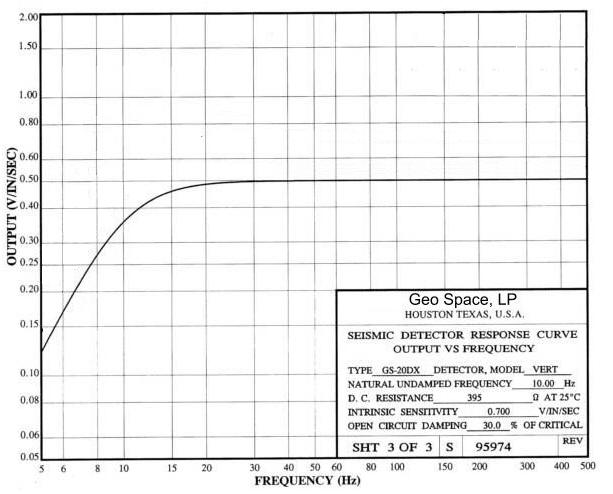
It is best to used a geophone that has a natural frequency at or lower than the lowest frequency of interest.
Seismic data files are stored in a SEG format. The first step is to convert the SEG output of the seismograph to an ASCII columnar format.
If you are using an ES-3000 or Geode, your controller PC should have this icon for Tape Reader on the desktop:

If not, download Tape Reader.
Run the program and click on File>>Open:
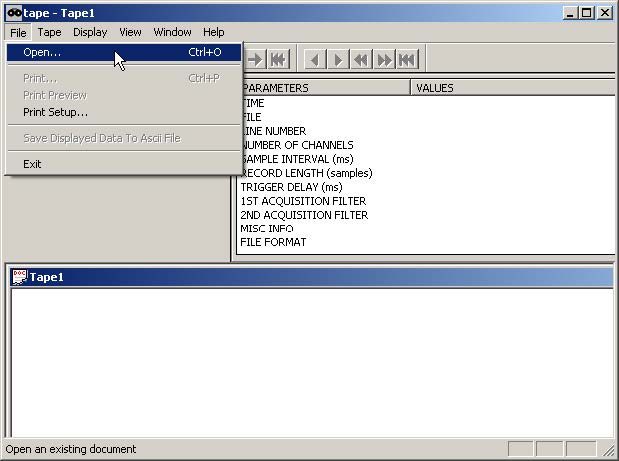
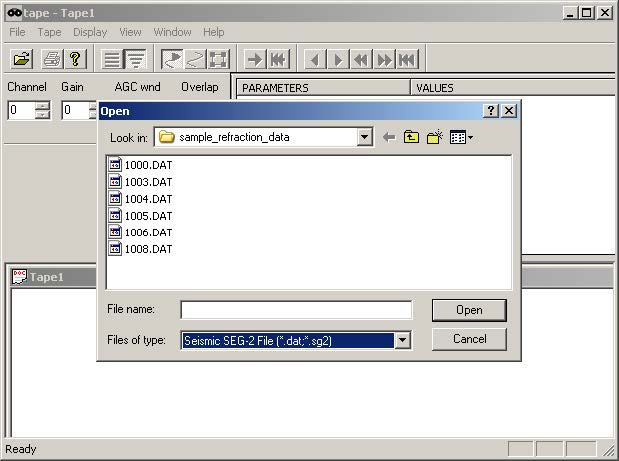
Read in the file you wish to convert to ASCII.
Now, click on File>>Save Displayed Data to Ascii File:
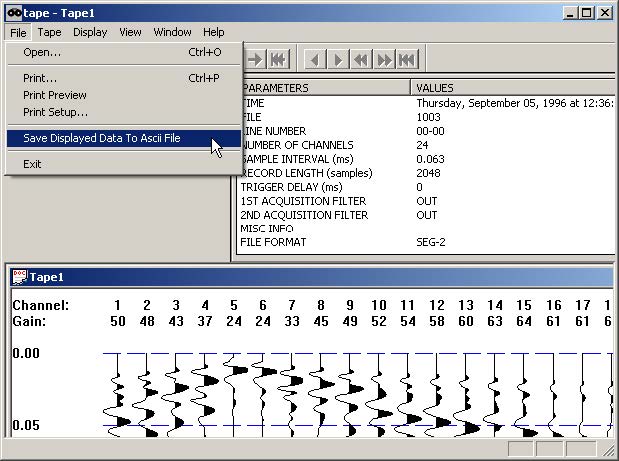
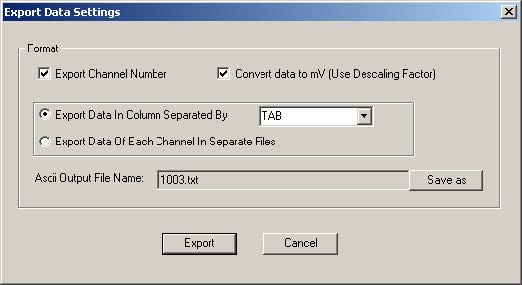
After making your format choices (be sure to convert to mV), press Export. The record will be written in an ASCII format that can then be imported to Excel. From here you can calculate the frequency spectra and particle velocities using the response function of the geophone.
